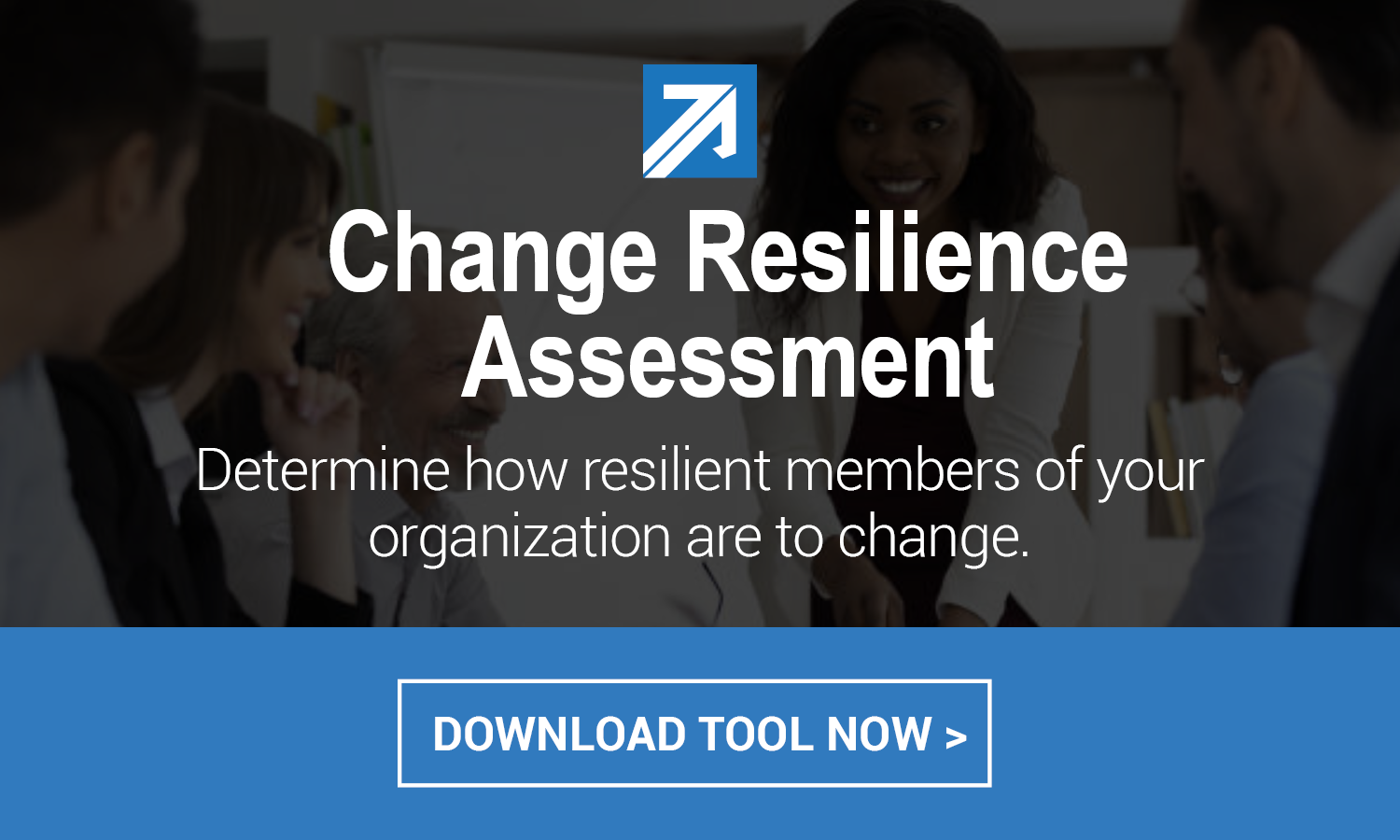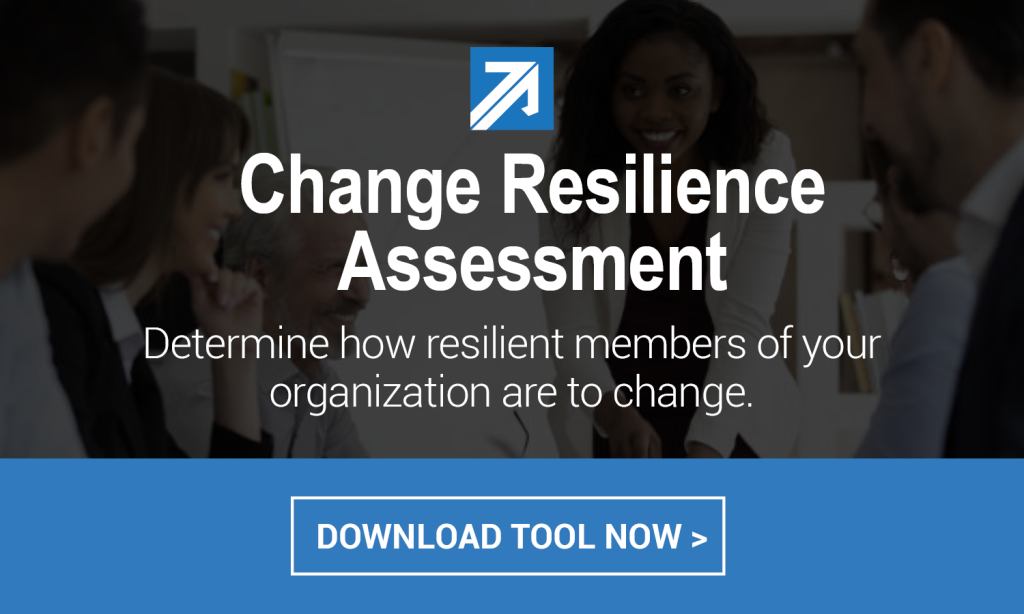

Proven Change Management Strategies for Your Healthcare Organization
August 10, 2022All healthcare companies undergo change on a regular basis. This is the reality of an industry in constant growth and continuous adaptation to the needs of patients. The most important feature of change is that it should be good for the community, the patients, the employees, and the company’s bottom line. Change should bring growth and long-term stability. Therefore, you should carefully manage change and plan to maximize its benefits while minimizing its negative impacts. Sound change management also requires a fully collaborative approach.
What is Change Management?
Change management is the oversight of people, processes, and structures to ensure implementation of organizational changes are meaningful and effective. Change management is based on a well-rounded evaluation of all systems and collective behaviors that define the organization throughout the process of change.
Let us say you want to open a new practice in a nearby neighborhood. You have a plan, the approved budget, the building, and you even have specific resources in mind for staffing. This is extremely exciting. Given all these positive elements, it is tempting to launch the new location with no further delay. However, implementing change without thoughtful consideration and a proper change management strategy can often turn into a larger challenge.
Proper change management techniques help prepare, support, and assist teams and individuals in navigating change successfully. You not only want a new clinic, but you also want a profitable clinic. You want to see lots of patients, provide excellent service, and have dedicated personnel at all levels. Successful practices need a solid foundation.
Tools For Change Management
Assessing the Right Point for Change
Change projects and processes should always utilize baseline data and system metrics to give you the best chance for success. Change assessment tools evaluate whether your organization is at the right point for change. This process enables you to identify the:
-
-
- Reason you need change
- Expected return or benefit
- Risks involved
- Resources you require to implement it
-
Additionally, change assessment tools collect data that provide you with a clear picture of where you have been, where you want to go, and how to get there effectively. While it is important to keep in mind that every organization is unique, there are several tools that can be useful across the board.
Our team of trusted advisors will support you by implementing change assessment tools that investigate whether your organization is at the right point for change. If it is not, we help you and your teams prepare.
Measuring Resilience to Change
Are you ready for change? Your readiness is a measure of the shared commitment at all levels of your organization to implement it, and a measure of your collective ability to bring it to the finish line. Are you resilient enough for change?
Resilience is a measure of your ability to adjust to change. What about your staff? How will the change affect them and how ready are they to embrace it? We are providing a Change Resilience Assessment tool to assist with measuring and compiling your results.
Click here to download your Change Resilience Assessment tool >

Once you understand these aspects, you can formulate a plan to manage expectations for change and implement clear communication to bring awareness and encourage buy-in at all levels.
Measuring Resistance to Change
But what happens after you assess your staff’s resilience to change and identify those change attitudes? Resistance to change is never the same for two people. Therefore, you must know how to get your people from either a neutral or resistant state to a committed change state. We call these system levers. They are the mechanisms we use to change behaviors. Here at John Lynch & Associates, we use our Change Assessment and System Lever identification tools to help you identify those areas of your organization that need special attention.
Without a doubt, most employees within an organization want to do an excellent job. However, it is often the case that systems within the organization limit their ability to do so. What you may label as a people problem is a system problem. Systems drive behavior. Therefore, you need a system that supports the right behavior for change.
Managing the People Side of Change
Too often, organizations implement change based on technical plans that do not consider the most critical issue: the people side. This aspect of change management is so important to success that you must address it early in the process. In fact, it is critical to discuss the importance of delivering the “Why” and “How” this change project will affect an individual’s day-to-day process.
Change is uncomfortable. Overall, attitudes toward change may vary drastically within your workforce ranging from suspicion and resistance, or even hostility to embracing change enthusiastically.
Contextual Communication
People’s internal responses to change stem from their upbringing, their past successes, and failures, their level of confidence or self-esteem, their job satisfaction, and their values. However, how you communicate change can critically impact perceptions. You must communicate using proper timing and clarity on the reasons for the change.
People must feel they have input and some control and must feel trust in their management team. Therefore, contextual communication is critical: deliver the right information to the right resource at the right time.
Staff Buy-In
Your staff should fully buy into the project. To achieve this, you should develop proper communication strategies at the executive level before line-level communication begins. In fact, your communication plan should have multiple communication methods and perspectives, tailored to a variety of situations, so that the entire workforce can be fully engaged in the project. In addition, the messaging should be clear and consistent at all levels.
System Levers
There are several system levers you can use to foster positive attitudes toward change. In fact, using system levers will get staff from either a neutral or resistant attitude to change to one of full commitment to the project. For example, implementing collaborative change teams and using advocates of change (Change Champions) embedded at each level of the organization, works well as a strategy. Our project managers use system levers to assist people through the various stages of processing change to reach a stage of excitement and active cooperation.
Plan for Disruption & Embrace the Resistance
Unfortunately, change is always going to create disruption, no matter how careful the planning. There will be new training needs, positions may need redefining, and leadership shifts may occur. Therefore, employees may feel anxious. Some disruptions may affect morale. It is inevitable for change to encounter resistance.
However, this resistance can be good for a project. It will bring to the surface issues that need to be resolved ahead of time. You should welcome and embrace resistance. Embracing resistance involves three steps:
-
-
- Acknowledgment
- Identifying reasons for resistance
- Developing a mitigation strategy
-
Acknowledgement
Firstly, acknowledge resistance as potentially painful and disruptive. You should anticipate its effects and use the information to decide whether to stick with one strategy or modify it. You must learn from it and use it to your advantage. You must recognize that this change might be disruptive and painful to employees, staff, and patients alike.
Identify Reasons for Resistance
Secondly, you must understand the root cause of resistance and recognize that it may look different for a doctor, nurse, or a receptionist, or even take different forms in particular individuals.
People want to know what their role in the change will be and how it will affect them. In fact, it is critical to communicate how disruptive and painful this change may be at an individual level and to be empathetic.
Develop a Mitigation Strategy
Lastly, you must develop a strategy base on education, clear communication, participation, and trust. Provide contextual information to anyone involved in the business aspect of the organization, including patients, other providers, suppliers, and anyone else touched by your organization.
The highest calling of leadership is the growth and development of people. All executives must keep this in mind because all staff and patients depend on them to ensure changes are effective.
When partnering with a John Lynch & Associates’ consultant you can successfully intervene at any point in the change-process to figure out where you are and where you need to be, no matter the size of your organization. Our tools are fully customizable to your unique needs. Contact us at 623.980.8018 or by email at inquiries@johnlynchandassociates.com


One more step to...
Get Instant Access To Your Change Resilience Assessment Tool
